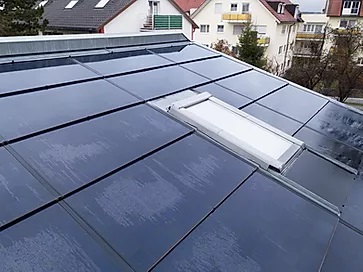Recent commencement of Change in Law1 payments by state power distribution companies (discoms) and Solar
Energy Corporation of India (SECI) for Goods and Services Tax (GST) to solar power projects, comes as a shot in the
arm for the sector. Together with safeguard duty (SFD) reimbursements, which also qualify under ‘Change in Law’, the
payments will lead to Rs 4,000 crore cash inflow for the sector. This can restore project returns by as much as 220
basis points (bps) and is positive for credit quality.
CRISIL had, in its July 9, 20192 press release, said that the imposition of SFD on import of solar cells and modules
had increased the implementation cost of ~5.4 giga watt (GW) projects by as much as 15% and compressed the
returns of developers by 160 bps. Add to this the hike in GST levy on modules and balance of the plant, and returns
reduced by a further 60 bps.
While Central Electricity Regulatory Commission (CERC) was quick to recognise the SFD imposition as a Change in
Law event, uncertainty prevailed over the timeliness and mechanism of its reimbursements.
Now, counter parties including SECI and discoms such as Maharashtra State Electricity Distribution Company Ltd
have started making payments towards GST reimbursements for their respective projects.
To ensure returns don’t diminish because of delays in payment, the reimbursement is in the form of 13-year annuity
and also factors in a carrying cost of 10.4% on a retrospective basis, in line with the CERC’s latest tariff orders3
.
Says Manish Gupta, Senior Director, CRISIL Ratings, “These annuity flows are not conditional upon project
performance and receipt of payments by central counter parties from the underlying discoms4
. This lends
more stability to these cash flows and supports the credit quality of these projects.”
Commencement of GST reimbursement paves the way for similar disbursements towards SFD (75% of overall
Change in Law payouts) where the payment mechanism is also established on similar lines and is awaiting
submission and verification of cost documents by developers. This strengthens the sectors’ outlook as, apart from
claw-back of returns, it yet again demonstrates upholding of contractual terms in line with power purchase agreement.
These developments come on the back of continued regulatory support such as the Ministry of New and Renewable
Energy’s memorandum upholding the ‘Must-Run’ status of renewable energy amid the Covid-19 pandemic5
, and extension of completion timelines for under-construction projects by the authorities in view of the lockdown. Earlier
SECI also abolished the tariff caps and continued to expand its presence as aggregator, protecting developers from
being directly exposed to weak state discoms.
Says Ankit Hakhu, Director, CRISIL Ratings, “Demonstration of such regulatory support has helped lower the
two critical risks the renewables sector faces – weak state counter parties and contractual uncertainties — and
has been pivotal in upholding the sector’s resilience during the pandemic. This will need to continue for a
stable credit outlook for renewables sector to be maintained.”

